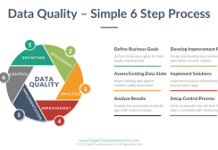How many times have you asked yourself if this business you have been developing for the last two years of your life really leaves you money? Do you doubt each month, when you see your account statements, if it is worthwhile to continue with this project that is costing you life with unimaginable levels of stress and anxiety? Do you have to do circus, rope and theater to show how good it is to invest in your business when you go to the bank to ask for a loan , an investment fund to ask for capital or your family and friends to continue believing in you with a little more funds to get the month?
If you live these situations, you are one of the many millions of entrepreneurs who are searching to know if they are dedicating their time correctly. And one of the ways to do it is to know the profitability of the business. It is striking that such a simple and mundane data can help you know if this is what you do, it’s worth it.
The problem with this very mundane concept is that it has endless connotations. The confusion is that profitability is measured in several ways: accounting, economic and financial. To this, we must add to the confusion the issues of opportunity cost, return on investment, net present value, benefit-cost evaluation and so many other things that for the amateur-level user can get confused. And it is not that the common entrepreneur can not know all these issues but when talking about profitability, you really need to manage a FIFA-ALL-STAR level to be able to say with total confidence: “Yes, my business is very profitable”.
Here are three things you should know about the profitability of your business that can help you make the following decisions in your project.
1. Profitability is not the same as Internal Rate of Return, however when we think of Profitability, we think of the Internal Rate of Return. I know, very confused. The big problem is that in order to measure profitability it is necessary to go much further than the internal difference between income and operating costs, although it might seem that way. If you want to know more about the subject, FAOand many other entities have very, very clear information, but if you want the short version, read on. Let’s say that I buy an apple in 1 dollar from a Mexican producer, I pack it and export it with a cost of another dollar and I manage to sell it in 4 dollars to a Saudi principle. Common sense would tell us then that our business was quite profitable (200%). And while this is a measure of the profitability of the project, this is not the main profitability sought by professional investors, since the profitability they talk about is not in terms of the project but the investment they will make. If for each apple sold, they had to invest a dollar, the real question is: how much they will earn for each dollar invested. And the answer lies not only in the participation (shares in the sale of apples) they have in the business but also the price of the money they used to invest. And here is where the most interesting and at the same time evident comes: the less money they invest from their own capital, and more from subsidies and preferential loans, the greater their profitability or, more precisely, their rate of return on investment. And it is not that each apple is more expensive but that their dollar will be cheaper for them, and therefore, with greater return.
“If I invest a dollar of my money and earn two dollars, my dollar doubles but if that dollar, the government gave me 50 cents, then I will now produce a dollar and a half for every 50 cents of mine. If 50% of my cents, 90% come from a loan, then I will continue to generate 2 dollars for an approximate 5 cents. And suddenly, I’m having an internal rate of return on my investment of 400 times to 1 instead of 2 to 1.
This is what the investors have in mind: how much will my investment return to me in concrete and not in the abstract according to possible sales projections, etcetera? For this reason, the IRR is so valuable for investment projects. This is the one that in many cases will make reason (or exit) to professional investors, family and friends.
2. Profitability is not opportunity cost, but as if it were. Many times the entrepreneur carries his product in response to the high opportunity cost that would cause him to be ” Godin “. And mental math begins:
“If I continued my work in company-x, I would be earning 30,000 apples a month and even though in my project I earn 1,000 apples a month for now, I am happier. Also, if I manage to make my business work, I can earn 300,000 apples a month, so in reality, being Godín costs me 270,000 apples a month. “
What is wrong with this argument? Actually, nothing. However, what the entrepreneur is debating is not the actual or possible profitability of his project compared to the profitability that Godín would generate, but rather the opportunity cost of not being an entrepreneur . And it does it in a quantitative way, which can generate many suspicions, but in principle, the methodology is correct. More accurate would be if done in the opposite way:
“This project, when it stops being Godín, will cost me 30,000 manzanas a month and it will not be profitable until I generate 30,001 manzanas per month. Earning less than 30,000 apples a month in my project is not profitable due to the opportunity cost. “
That an idea is not profitable does not mean it is not a good idea because, it is also true, there are no 100% safe and reliable jobs.
3. Profitability vs. Risk.
Normally, I hear entrepreneurs being very confident with their sales projections. Few entrepreneurs think that they will take more than 1 year to leave the valley of death and promise that in less than two years, they will be doubling or tripling sales. Interestingly, profitability and risk go hand in hand. Or at least it is what the history of the company has taught us. If the profitability of your project is 2 to 1, then the risk will also be quite high. If it is 3 to 1, then the risk will rise irremediably. Likewise, if the risk of the investment falls, surely the profitability will be lower. Up to this point there is no real problem until there is talk of great investment returns without any risk. It is at this moment that the eyebrows are necessarily raised and makes one suspect if one has really calculated the profitability or calculated the risk. And the answer will usually be that none is well calculated.
However, this rule of three has many advantages for those who seek resources. You can offer great returns in an honest way by also projecting big risks and in the same way, you can improve your terms of entry and exit of investors by lowering your projected return and therefore your risk, with which you can expand your portfolio of investors.











